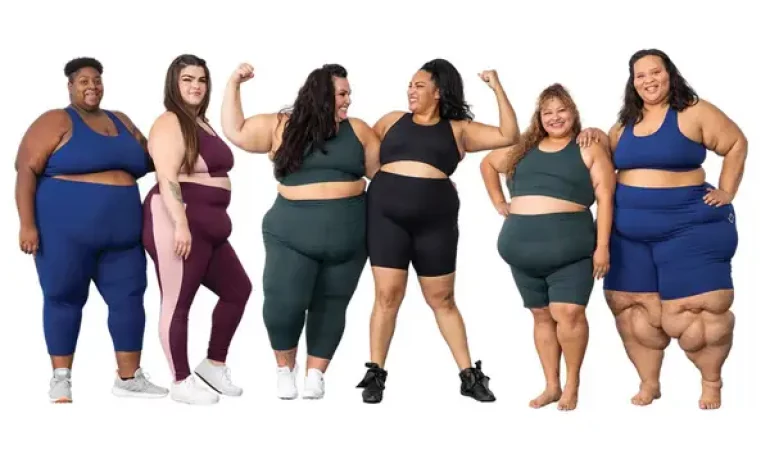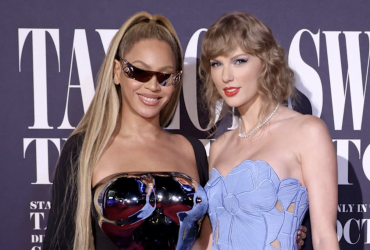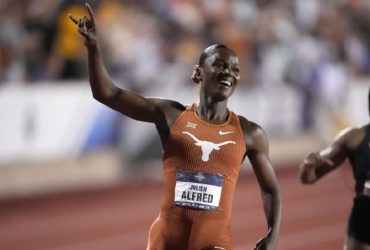Study Reveals Clothing Worries Lead to Drop in Female Sports Participation.

Recent research has revealed that gender-specific school sports uniforms significantly contribute to the high dropout rates of teenage girls in sports. This groundbreaking study has already led to the revision of strict policies, resulting in a positive change. As a result, women’s English domestic hockey matches will no longer require the compulsory wearing of skirts.
A study was published in Sport, Education, and Society, examining women aged 18 and above from various regions in the UK. The research, spearheaded by Tess Howard, a prominent figure in England Hockey and the key player in securing the country’s inaugural Commonwealth Games gold medal with a 2-1 victory against Australia last summer, discovered that 70% of participants reported instances of girls quitting sports at school due to clothing and body image concerns.
At the age of 24, Tess Howard conducted her study while pursuing a degree in human geography at Durham University. Early on, she actively promoted her dissertation paper within the field hockey circles, leading to the implementation of new inclusive playing kit regulations at the beginning of England Hockey’s domestic league in the 2022/23 season.
Currently playing as a forward for East Grinstead Hockey Club, Howard has embraced the role of a sports activist alongside her playing career. Her primary objective is to bring about international changes in the sport of hockey, advocating for athletes to have the freedom to choose between wearing shorts or skorts. In the long run, her goal is to address the issue of gendered uniforms across all sports.
According to Tess, the key principle driving her mission is inclusivity, with the belief that offering choices to athletes is paramount. She is also a prominent player for Great Britain, though she unfortunately missed the Tokyo 2020 Olympics due to an anterior cruciate ligament injury.
My aspiration is not only to compete in the Olympics but also to see an Olympics where athletes have the choice to wear shorts or skorts. This would be a powerful testament to inclusivity, a sense of belonging, and progress in women’s sports. Nobody should feel discouraged from participating in any sport simply because of uniform requirements. Our primary focus should be on promoting the essence of sport and enabling individuals to relish the many evident benefits of being active.
Whether someone prefers shorts, leggings, or any other attire while playing basketball, tennis, gymnastics, or any sport, it should not be an issue. The results I uncovered regarding the number of girls deterred from sports due to uniforms are truly concerning. This aspect remains one of the most underestimated factors contributing to the low numbers of female participants in sports.
Howard, currently pursuing a master’s degree at the London School of Economics, points out that the legacy of gendered and sexualized uniforms has historical roots, dating back to the Victorian era. During that time, women and girls in sports had to emphasize their femininity to gain acceptance in a predominantly masculine environment. This was evident in sports like tennis, cricket, and hockey, where long skirts were the norm. Even in modern times, remnants of this legacy persist, seen in the sexualization of beach volleyball and gymnastics uniforms.
My research highlights that gendered sports uniforms have a negative impact on the perception of women’s sports, starting from a very young age. It shifts the focus onto the appearance of girls’ bodies rather than recognizing their athletic abilities on the field or in the gym. Despite the increasing success of female sporting teams, we cannot overlook the numerous girls who have abandoned sports due to uniform-related issues. This is not solely a problem affecting girls; it is deeply rooted in society and can be easily remedied with a straightforward solution: offering choices.
Historical data indicates that the gender disparity in sports participation begins as early as age 5. By the time girls reach age 14, only 10% of them meet the recommended physical activity health standards.
Howard’s primary inquiry was to delve into the key obstacles affecting female sports participation, looking beyond societal norms, social media influences, and economic class factors.
Her research hypothesis focused on the potential influence of school sports uniforms on women’s experiences in sports and their level of engagement in physical activities. Additionally, she sought to identify how a revision of uniform policies could contribute to enhancing female sports participation.
To gain deeper insights, she conducted an extensive online survey, widely promoted through social media, which attracted 404 responses from women across the UK. Subsequently, Howard conducted eight interviews with a selected group of individuals who had recently graduated from school.
The results revealed a significant impact of uniforms on sports participation and enjoyment. In fact, three-quarters of the survey respondents indicated that they had frequently observed girls giving up on sports due to concerns related to sports attire or body image issues.
The findings of the study also revealed the following:
- Many women expressed feeling sexualized by the mandatory sports attire, leading to the internalization of unrealistic and unattainable “feminine body ideals.”
- Gender-specific uniforms played a role in shaping a fear of being perceived as “masculine” or “butch/lesbian” in the context of sports. This highlighted how uniforms could contribute to harmful tensions surrounding athletic-feminine identities among teenage girls.
- The existence of gendered uniforms contributed to the reinforcement of behavioral gender role stereotypes. The elimination of cis-normative clothing practices could foster a more inclusive environment, particularly for gender-diverse students.
- Providing choices in sports attire also has a positive impact on supporting physical performance in sports.
The study’s respondents provided quotes that shed further light on the issue:
“One of my friends with larger breasts stopped playing sports due to the design of our tops,” shared one respondent.
Another participant stated, “During the years 7 to 9, girls in my PE classes felt uneasy about the fit of some sports attire, and it negatively affected their self-confidence if they didn’t have the so-called ‘ideal female body.'”
Yet another respondent expressed, “I felt scrutinized while playing sports alongside boys, and wearing clothes that accentuated my figure made me uncomfortable.”
In response to the initial findings of the study, Howard utilized her influence within the sport to bring about a positive change. However, she remains resolute in her determination to continue addressing the issue beyond this point.
Presently, she is initiating the establishment of Inclusive Sportswear CIC, a community-interest company dedicated to developing comprehensive and inclusive sportswear policies and guidelines for schools, clubs, sports organizations, and brands. In collaboration with Youth Sport Trust and Sporting Equals, Inclusive Sportswear CIC will be officially launched on May 3 at the Include Summit in Manchester, the UK’s premier Equality, Diversity, and Inclusion Summit for Sport.
Howard elaborates, saying, “I consistently ask myself: If not now, then when? If not us, then who? That is what propels me forward. The momentum has been steadily building, and now it is essential to bridge the gap between sports clothing and fostering inclusivity and active participation in sports. But it goes beyond that; it aligns with a broader global movement advocating for individual choice regarding how we dress and care for our bodies.”



